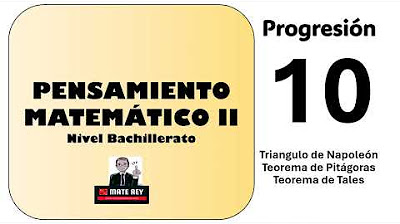Unit 2A Part 3 Thinking and Problem Solving
Summary
TLDRThis video, part of the AP Psychology curriculum, delves into cognition, focusing on thinking and problem-solving. It explains key concepts such as schemas, prototypes, and the cognitive processes involved in categorizing information. The video explores various problem-solving methods, including trial and error, heuristics, and algorithms, highlighting their advantages and drawbacks. It also discusses cognitive biases like the gambler's fallacy and the sunk cost fallacy, and the role of creativity in problem-solving. By the end, viewers will have a comprehensive understanding of how thinking influences decision-making and creativity.
Takeaways
- 🧠 Understanding cognition involves recognizing executive functions, which are higher-order thinking processes that enable goal-oriented behavior.
- 📚 Concepts are mental groupings of similar objects or ideas that help us categorize information efficiently.
- 🪑 Prototypes represent the ideal version of a concept, aiding in quick identification of similar objects.
- 🔍 Schemas are mental frameworks formed through experiences, allowing assimilation or accommodation of new information.
- 🔧 Problem-solving is a cognitive process handled by the prefrontal cortex, utilizing methods like trial and error, heuristics, and algorithms.
- 🔄 Trial and error allows for exploration but can be time-consuming and lacks guaranteed success.
- ✅ Heuristics simplify decision-making but can lead to cognitive biases and incorrect judgments.
- 📊 Algorithms provide structured steps for problem-solving, ensuring accurate solutions but may be complex and resource-intensive.
- 💡 Creative problem-solving is hindered by functional fixedness, which restricts thinking to conventional uses of objects.
- 🔄 Divergent thinking encourages multiple solutions to a problem, while convergent thinking focuses on finding a single correct answer.
Q & A
What are the major topics covered in the video on thinking and problem solving?
-The video covers concepts related to cognition, including how we categorize information through concepts and prototypes, schemas, problem-solving methods, heuristics, and the influences on decision-making.
How do concepts and prototypes assist in categorizing information?
-Concepts are mental groupings of similar objects or ideas that help organize our understanding of the world, while prototypes are the best examples or mental images representing these concepts, making it easier to identify and categorize objects.
What is a schema, and how does it relate to assimilation and accommodation?
-A schema is a mental framework of ideas and expectations developed through experience. Assimilation occurs when new information fits into an existing schema, while accommodation happens when new information requires modifying an existing schema.
What are the three major problem-solving methods discussed in the video?
-The three methods are trial and error, heuristics, and algorithms. Each has its own advantages and disadvantages, affecting how we approach and solve problems.
What is the difference between trial and error and algorithms?
-Trial and error involves trying multiple possibilities to find a solution, which can be time-consuming and uncertain. In contrast, algorithms are step-by-step logical instructions that guarantee a specific outcome but may require more time and resources.
Can you explain the representativeness heuristic and provide an example?
-The representativeness heuristic is a mental shortcut where a judgment is made based on how closely an example resembles a prototype or stereotype. For instance, if someone meets a woman who enjoys working with people, they might assume she's a teacher based on stereotypes, even if she's actually a CEO.
What role does priming play in decision-making?
-Priming is a psychological phenomenon where exposure to a stimulus influences how we respond to subsequent stimuli, often unconsciously. For example, seeing pictures of bread can make someone more likely to complete a word puzzle related to bread.
What are the gamblers fallacy and sunk cost fallacy, and how do they affect decision-making?
-The gamblers fallacy is the mistaken belief that past random events affect future outcomes, such as assuming a coin flip will be tails after several heads. The sunk cost fallacy occurs when individuals continue a task based on prior investments, even if it's no longer worthwhile.
What is functional fixedness, and how does it impact problem-solving?
-Functional fixedness is the tendency to see objects only in their traditional uses, which limits creative problem-solving. For example, someone might overlook using a paper clip as a hook because they only think of it as a fastener.
How do divergent and convergent thinking differ?
-Divergent thinking is a creative approach to problem-solving that explores multiple solutions, while convergent thinking focuses on narrowing down options to find a single correct answer.
Outlines

This section is available to paid users only. Please upgrade to access this part.
Upgrade NowMindmap

This section is available to paid users only. Please upgrade to access this part.
Upgrade NowKeywords

This section is available to paid users only. Please upgrade to access this part.
Upgrade NowHighlights

This section is available to paid users only. Please upgrade to access this part.
Upgrade NowTranscripts

This section is available to paid users only. Please upgrade to access this part.
Upgrade NowBrowse More Related Video
5.0 / 5 (0 votes)





